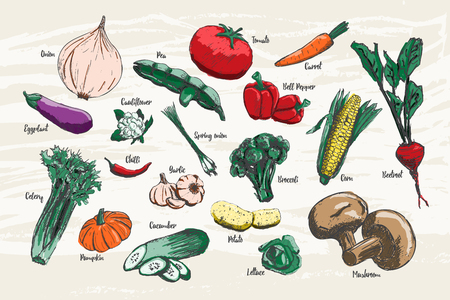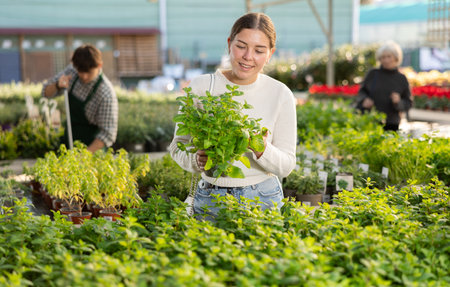Introduction to Traditional British Winter Vegetables
When the days grow shorter and frost settles over the countryside, traditional British winter vegetables come into their own. Rooted in centuries of culinary heritage, these hardy crops—such as Brussels sprouts, parsnips, swedes, leeks, and kale—have long formed the backbone of winter meals across the UK. Their resilience to cold and damp conditions makes them particularly well-suited to the British climate, thriving even when other crops falter. Beyond their practicality, these vegetables carry deep cultural significance: they are central to classic dishes enjoyed around the Christmas table, Sunday roasts, and comforting stews that warm the soul through the chilly months. Embracing these time-honoured varieties not only connects us to our agricultural traditions but also supports a sustainable approach to eating seasonally and locally.
Climate Considerations in British Winters
Understanding the nuances of the British winter climate is crucial for any gardener aiming to cultivate traditional winter vegetables. The UK’s winter weather varies significantly by region, but certain characteristics are consistent: cool temperatures, frequent rainfall, low light levels, and the ever-present risk of frost. These factors directly influence both soil conditions and plant growth.
Typical Winter Weather Across the UK
British winters are known for their unpredictability. While southern areas tend to be milder, northern regions and Scotland often face harsher conditions with longer periods of frost and even snow. The table below summarises key climatic differences:
| Region | Average Winter Temperature (°C) | Rainfall (mm/month) | Frost Frequency |
|---|---|---|---|
| South England | 3-7 | 70-90 | Occasional |
| Midlands | 2-6 | 60-85 | Moderate |
| Northern England/Scotland | -1 to 4 | 80-110 | Frequent |
| Wales/Northern Ireland | 2-6 | 90-120 | Variable |
Soil Conditions and Preparation
The combination of cold temperatures and persistent rain leads to heavy, often waterlogged soils—a challenge for many crops. Well-draining soil is essential to prevent root rot, so incorporating organic matter such as compost or well-rotted manure is highly recommended. Raised beds can also help mitigate issues related to excess moisture.
Soil Preparation Checklist:
- Add organic matter in early autumn to improve drainage and structure.
- Avoid walking on wet soil to prevent compaction.
- Mulch beds after planting to insulate roots and retain soil warmth.
Light Levels and Plant Growth
The UK experiences notably short daylight hours from November through January, which can slow vegetable growth. Choosing hardy varieties that tolerate low light—such as kale, leeks, and Brussels sprouts—can make all the difference. Positioning plots where they receive maximum available sunlight is equally important.
Managing Frost Patterns
Frost poses a significant threat, particularly in exposed or northern gardens. Understanding local frost dates allows you to time plantings more effectively. Cloches, fleece, or cold frames provide extra protection during sudden cold snaps.
Quick Reference: Frost Protection Methods
- Cloches for individual plants or rows.
- Garden fleece draped over crops on frosty nights.
- Mulching with straw or leaves around vulnerable roots.
- Selecting frost-hardy vegetable varieties.
The interplay between weather patterns, soil health, light availability, and frost risks defines the success of winter vegetable cultivation in Britain. By tailoring your approach to these local climate factors, you lay the groundwork for a productive winter garden filled with traditional British crops.

3. Top Traditional Winter Vegetables and Their Key Varieties
Winter in the UK is synonymous with a selection of robust, flavour-packed vegetables that have stood the test of time—both on our plates and in our allotments. Here’s a closer look at the staple crops that define the traditional British winter kitchen, alongside some proven varieties that thrive in local conditions.
Cabbages
Cabbages are an enduring favourite across Britain, valued for their hardiness and versatility. January King is perhaps the quintessential winter cabbage, with its frost-tolerant nature and attractive purple-tinged leaves. Another reliable choice is Tundra, known for its resistance to both cold snaps and disease, making it a dependable option for less experienced growers. For those seeking a classic flavour profile, Wintergreen offers crisp heads well into the early spring months.
Leeks
No British winter garden is complete without leeks, prized for their subtle sweetness and resilience through harsh weather. Musselburgh has long been the go-to variety, celebrated for its stout stems and ability to withstand frost. If you’re after something with a slightly longer harvest window, Bandit offers excellent bolt-resistance and stands well in the soil until needed. Leeks are ideal for succession planting, ensuring a steady supply from autumn right through to late winter.
Parsnips
Parsnips develop their signature sweetness after the first frosts, making them a rewarding crop for patient gardeners. The variety Gladiator F1 is widely favoured in the UK for its uniform roots and canker resistance. Javelin is another strong performer, producing long, smooth parsnips that are easy to lift even from heavy soils. For traditionalists, Hollow Crown remains a heritage choice that delivers rich flavour when roasted or mashed.
Brussels Sprouts
A festive staple and source of national debate at Christmas dinner tables, Brussels sprouts truly come into their own in cold weather. Trafalgar is highly regarded among British growers for its uniform sprouts and good standing ability through wind and rain. Cascade F1 matures over an extended period, allowing gardeners to pick fresh sprouts right up to February. For gardeners keen on organic methods, Evesham Special offers heritage character alongside reliable cropping.
Swedes (Rutabaga)
The humble swede is another pillar of winter cooking, prized for its earthy flavour and storage qualities. Best of All lives up to its name by producing firm-fleshed roots with consistent size—perfect for neeps and tatties or hearty stews. Invitation F1 provides improved disease resistance and vigorous growth even in challenging soils. Swedes are particularly well-suited to the British climate as they tolerate cold snaps without becoming woody or bitter.
This roster of time-honoured crops—bolstered by reliable modern varieties—demonstrates just how much British gardens can offer during the colder months when careful selection meets attentive cultivation.
4. Soil Preparation and Planting Timings
Success with traditional British winter vegetables starts with thorough soil preparation in autumn, followed by careful timing of sowing and planting. Here’s a practical, step-by-step approach tailored for UK gardens.
Step-by-Step Ground Preparation
- Clear Summer Crops: Remove the remains of summer vegetables and weeds to prevent disease build-up.
- Add Organic Matter: Dig in well-rotted manure or garden compost to boost soil fertility and improve structure. Aim for at least one bucket per square metre.
- Test and Adjust pH: Most winter veg prefer slightly acidic to neutral soil (pH 6.0–7.0). Add lime if your soil is too acidic, especially important for brassicas.
- Rough Digging: Leave the soil surface rough over winter. Frost will break down clods, creating a fine tilth for spring plantings.
Sowing Strategies for Success
- Direct Sowing: Root crops like parsnips and carrots are best sown directly where they will grow, as they dislike transplanting.
- Module Sowing: Brassicas and leeks can be started in modules or seed trays under cover before transplanting out, protecting them from early pests.
- Succession Planting: For a continuous harvest, stagger sowings of leafy greens such as spinach and winter lettuce every two to three weeks until late autumn.
Recommended Schedules for Key Winter Vegetables
| Vegetable | Sow Indoors | Sow Outdoors | Transplant Out |
|---|---|---|---|
| Cabbage (Winter varieties) | March–April | April–May | June–July |
| Kale | April–May | May–June | June–July |
| Leeks | February–March | – | May–June |
| Parsnips | – | March–May | – |
| Brussels Sprouts | March–April | – | May–June |
| Savoy Cabbage | – | April–May | June–July |
| Swede & Turnip | – | May–June (Turnip); May (Swede) | – |
| Salsify/Scorzonera | – | March–April | – |
Tips Specific to British Conditions:
- Avoid Waterlogging: Raise beds or create shallow ridges if your plot suffers from heavy clay or poor drainage, common in many UK regions.
- Pest Protection: Use mesh or horticultural fleece against pigeons and cabbage root fly, especially when seedlings are young.
The Bottom Line:
The right groundwork through autumn and attention to sowing times will set your winter veg up for sturdy growth and reliable harvests during the darkest months. With a bit of preparation now, your plot can provide fresh, nutritious produce throughout the British winter.
5. Caring for Crops Through a British Winter
Surviving the often unpredictable and wet British winter is a real test for both gardener and vegetable patch. Thankfully, with a bit of forward planning and some practical know-how, you can keep your traditional winter vegetables thriving until spring’s return.
Mulching: Insulation and Moisture Control
One of the most effective strategies for protecting crops like leeks, parsnips, and cabbages is mulching. A generous layer of well-rotted manure, leaf mould, or even straw helps insulate the soil, keeping roots warmer and preventing them from freezing solid during frosts. Mulching also helps regulate moisture levels, which is crucial in British gardens prone to waterlogging after heavy rain. Make sure to top up mulch as it breaks down over the season.
Protection from Harsh Weather
Winter winds and driving rain can batter even hardy vegetables. Erecting simple windbreaks using woven hurdles or recycled netting can reduce damage and help maintain slightly higher temperatures around your crops. For particularly tender varieties like winter lettuces or young brassicas, consider using cloches, fleece covers, or cold frames. These low-cost solutions offer a microclimate that wards off frost and encourages steady growth without overheating on milder days.
Practical Pest Management
Pests don’t take the winter off; slugs, pigeons, and even rabbits will seize any opportunity to feast on your hard-earned produce. Regularly inspect plants for signs of nibbling or damage. Organic slug pellets, beer traps, or copper tape can help keep slugs at bay without harming other wildlife. Netting is invaluable for protecting brassicas from hungry pigeons—just be sure it’s secured tightly to prevent birds from getting trapped. And never underestimate the value of removing dead leaves and debris to reduce hiding places for pests.
Routine Checks: A Gardener’s Discipline
A short weekly walk around your plot goes a long way—look out for windblown covers, pooling water, or early signs of disease such as yellowing leaves or rot. Prompt action can prevent small problems turning into major setbacks.
Summary Tip
Winter gardening in Britain is as much about vigilance as it is about preparation. With these hands-on methods—mulching, weatherproofing, and sensible pest management—you’ll give your traditional winter vegetables their best chance to thrive through the coldest months.
6. Harvesting and Storing Over Winter
Knowing when and how to harvest your winter vegetables is key for both flavour and longevity. Most traditional British winter crops, such as parsnips, leeks, Brussels sprouts, and swedes, actually improve in taste after the first frost—natural cold sweetens their starches. For root vegetables like carrots and parsnips, gently loosen the soil with a fork before lifting to avoid damage. Brassicas such as cabbage and kale should be cut at the base with a sharp knife, leaving roots in the ground if possible to help maintain soil structure.
Timing Your Harvest
The optimal time to harvest depends on both the vegetable and local weather conditions. Root vegetables can often be left in the ground until needed but should be lifted before any severe freeze sets in. Leeks are best taken as required; Brussels sprouts can be picked from the bottom up as they mature. Always try to harvest during dry weather to prevent introducing excess moisture into storage, which can encourage rot.
Traditional Storage Methods
Historically, British gardeners relied on simple yet effective techniques for storing winter produce. Root vegetables are commonly kept in clamps—shallow pits lined and covered with straw and earth—providing insulation against frost while allowing good ventilation. Alternatively, a cool shed or cellar works well; just ensure there is no risk of freezing and that air circulation is maintained.
Keeping Your Supply Steady
Layer root crops such as carrots, beetroot, and swedes in boxes of dry sand or sawdust to reduce shrivelling. Brassicas store well hung upside down in a cool place or left standing in the garden with some fleece protection during milder winters. Remember to check your stores regularly for signs of spoilage—removing any damaged vegetables promptly helps preserve the rest. With careful timing and these traditional methods, you can enjoy a steady supply of homegrown British winter veg throughout the colder months.


